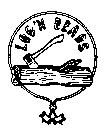
When I was in the field, many people asked me about the history of the Wood Badge. I felt it was important enough to devote this month's training article to it.
As early as 1911, four years after the launching of the Scout movement, the Founder recognized the need for some system of adult leader training. He encouraged commissioners all over the United Kingdom to experiment with training courses for Scouters. In 1913, he devised a set of notes for use at Scouters' training camps.
The onset of the First World War delayed any further action, but B.P. did not forget about it. In 1918, when Mr. W.F. DeBois MacLaren offered to provide a camp for the Scouts in London, B.P. suggested it might also be used as a training site for Scouters. Mr. MacLaren agreed and, in 1919, Gillwell Park at Chingford in Essex, England, was purchased. On September 8, 1919, the first training camp for Scoutmasters was held. It was patterned on what B.P. used in 1907 at the first camp for boys on Brownsea Island, and on notes he had written in the Headquarters Gazette. He described the framework of training at Gilwell in Aids to Scoutmastership, published shortly after the first training camp.
The Diploma Course for the Wood Badge, as B.P. called it, had three parts.
Today, Wood Badge courses are conducted in a variety of ways. Some are set up for individual program sections over a series of weekends or during a week-long experience. Some councils conduct multi-section Wood Badge courses and others present a family Wood Badge were spouses and children are included and participate in a program of their own.
From the small beginning in 1919, Wood Badge training has developed and become internationally accepted. Holders of the Wood Badge, who all are members of the 1st Gilwell Park Group, are recognized around the world.
The World Conference considers Wood Badge training one of the major unifying factors in World Scouting and has repeatedly reaffirmed its belief in the value of this type of training.
The necklace consisted of 1000 or more beads strung on a rawhide lace. The beads were made of a South African yellow wood with a soft pith so that, when they were shaped, the pith made a natural nick at the end of each bead.
Such a necklace was a distinction conferred on royalty and outstanding warriors. This particular necklace was worn by Dinuzulu, King of the Zulus, and was given to B.P. when he defeated the Zulus during hostilities in Natal Zululand.
B.P. obtained the leather thong during the Siege of Mafeking. Things were not going well. An elderly man who met him asked about his unusually depressed appearance. Then the man took the leather thong from around his neck and placed it in B.P.'s hand. "Wear this," he said. M"My mother gave it to me for luck. Now it will bring you luck."
B.P. took two beads from the necklace and knotted them on the thong to create what is now known worldwide as the Wood Badge.
Replicas of the beads were made from beech wood at Gilwell Park in London. Originally, the Wood Badge was worn around the brim of the stetson, to hold it in place. Latter it was around the neck, and the woggle and the neckerchief were added.
On the peak of the scar is a small patch of the MacLaren tartan, a reminder that Gilwell Park was bought and presented to the movement by Mr. MacLaren.
In those days, the lighting of fires by friction was very much of a novelty and, for many years, was demonstrated on Wood Badge courses. The main piece of equipment for this activity was a leather thong. When not being used for fire-making, the thong was long enough to make a two-strand Turk's Head Woggle, which is what we wear today.
When you present Wood Badges in the future, consider including some of the history behind the insignia in your presentation. You might be interested to know that, from September 1982 to August 1983, (the Canadian) national office distributed a total of 3,395 Wood Badge laces and beads to the field.